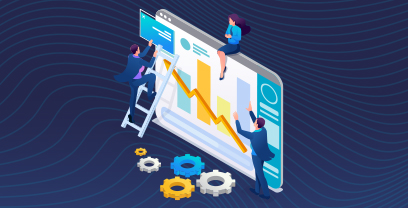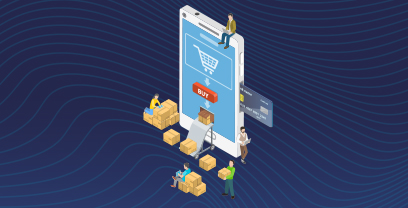|
The Forrester Wave™: Supplier Value Management Platforms, Q3 2024 See Report
Blog »
Securing the Future: The Importance of Sustainable Procurement

di Vishal Patel
Previously published on Inkopers Café
Discover how Ivalua is leading the way towards sustainable procurement with our new Environmental Impact Center. Vice President of Product Marketing, Vishal Patel, sheds light on the crucial role procurement plays in reducing CO2 emissions in value chains. Learn how organizations can measure and lower their carbon footprint with this ground-breaking software platform.
“Sustainable procurement at the organizational level involves integrating Environmental, Social & Governance (ESG) factors into procurement policies and processes and collaborating with suppliers according to sustainable strategies,” explains Vishal Patel from his workplace in New York. “It also means that a company doesn’t just make purchases based on price but also considers sustainability. Procurement provides the company with information to make informed decisions.”
In sustainable procurement, reducing CO2 emissions is an important goal. These emissions can be divided into Scope 1, Scope 2, and Scope 3 emissions. Scope 1 emissions result from the combustion of fuel, exhaust from company vehicles, and fugitive emissions within a company. Scope 2 emissions are the emissions from purchased electricity, heat, and steam. Scope 3 emissions encompass the rest of the emissions, including those from purchased goods and services, transportation, waste, business travel, employees’ commuting, etc. Scope 3 emissions account for over 75% of the total emissions.
Patel gives the example of purchasing a table. “There are various factors that determine the emissions associated with that table. The EIC provides a model for capturing the emission data for that table. We use different data sources, including third-party sources. In some cases, the supplier can provide verified data to the procurement department, which is the highest-quality data. In other cases, it involves estimated emissions that the buyer can obtain from third-party data sources.
The buyer can then ask the supplier to verify the data. This way, procurement can establish baselines for all the CO2 emissions from purchased goods and services. This enables procurement professionals to identify the categories in which they can collaborate with suppliers to reduce emissions.
Over time, procurement can measure the reduction in emissions compared to the baseline and report on it. Using emission data, procurement can also assign environmental risk scores to suppliers. The procurement department can then work with the supplier to find ways to reduce the risk. Additionally, during sourcing, procurement can choose suppliers and products or services with the lowest risk score. They can also replace products with high emissions with those with lower emissions.”
He explains that it is important for companies to standardize the measurement and monitoring of emissions, especially for Scope 3 emissions. “Currently, there is no standardization from regulations, and there is insufficient data to rely on. This makes it challenging for companies to reduce emissions. For example, when considering the emissions associated with a supplier’s table, it is currently very difficult to determine. It is crucial that such a standard is established soon. A positive development is that more and more companies are adding a carbon footprint to their products.”
According to Patel, purchasers can incorporate the reduction of Scope 3 emissions effectively into their approach. “This aligns well with procurement activities such as sourcing, determining supply risks, analyzing spend, and achieving savings. It starts with a strategy for measuring and managing Scope 3 emissions in procurement. Additionally, it is important how they make emission data available for all procurement processes. Procurement should not wait for new regulations but begin immediately.”
Collaboration with Suppliers
Currently, procurement is somewhat hesitant when it comes to sustainability. “Inflation, recessionary pressures, and supply shortages demand a lot of attention. Procurement has been heavily relied upon since the COVID-19 pandemic. Sustainable procurement is currently in the phase of setting strategies and collecting data. Fortunately, there are organizations that continue to invest in technology and sustainability because the downturn will eventually come to an end. I believe that sustainability will become a significant focus in the next three to four years. Ultimately, we will reach a point where sustainability is at least as important as the price.” According to Patel, a lot also depends on the strategies and decisions of procurement leaders.
“Companies often embrace the goal of achieving net-zero emissions by 2040. I see a great role for procurement in leading the discussion on reducing Scope 3 emissions. Procurement knows best how and where reductions can be achieved through collaboration with suppliers.” Patel emphasizes that it is a misconception that sustainability leads to higher costs.
“Sustainability means efficiency, reducing energy consumption, raw materials, etc. That saves money. In a broader sense, less pollution leads to fewer social costs.” Additionally, he believes that a sustainable approach is crucial for customer retention. “People increasingly want companies to contribute to sustainability. For this to happen, companies need to invest in new sustainable products. For example, we have a customer in the construction sector that wants to help suppliers develop more sustainable products. However, there is not always sufficient demand for these products from the construction sector. Therefore, the construction company seeks collaboration with competitors to achieve that. When there is enough demand, suppliers can invest in innovative, sustainable products. We need many more of these collaborations.”
Sustainable Procurement
Patel believes that sustainable procurement could have developed faster than it currently is. “COVID hasn’t helped in that regard. Currently, the European Union (EU) is ahead of the rest of the world. The progress of sustainable procurement largely depends on regulation, such as the German Supply Chain Act. The process of creating such regulations is very slow. Additionally, it depends on the decisions of boards of directors and investors for their companies. I see shareholders strongly pushing for sustainability, and I have high expectations in that regard.”
According to Patel, the possibilities of visualizing sustainability throughout the entire supply chain are still limited.
“There are still few companies that can accurately map their supply chains. It is also challenging to obtain information from a tier-3 supplier in China, for example. Moreover, not every company in the chain wants to be transparent due to competition or because a company does not meet ESG criteria. Technology is there to help, but at a certain level, it is not enough. It comes down to people’s cooperation. I think laws like the one in Germany can help with this. They make it the responsibility of the buyer to have insight into all suppliers in their supply chain and document their sustainability. I believe more countries should adopt such regulations. It will accelerate things. It’s funny that regulation is both a problem and a solution.”
Supplier Carbon Manager
Patel has recognized interesting developments in sustainability and procurement. “For example, there are CPOs who have transitioned into Chief Sustainability Officers. I even see emerging roles such as ‘Supplier Carbon Manager’.” He sees the increasing importance of sustainability in procurement as a good way to attract new procurement talent. “New generations want to do meaningful work that goes beyond just making money. The focus on sustainability can enhance the attractiveness of a procurement career, leading to more people pursuing procurement studies.”
Ivalua’s EIC Accelerating Sustainability Goals
Collaborating with suppliers to cut down on Scope 3 emissions can do more than meet regulatory standards. It’s also an opportunity to showcase your eco-friendly values and drive actual progress. The benefits extend beyond the environment, including greater customer loyalty, employee satisfaction, and an enhanced reputation for your company. Jointly tackling Scope 3 emissions can pay off in more ways than one!
More Resources: EIC Data Sheet, EIC Landing Page

Vishal Patel
VP Product Marketing
Vishal has spent the last 15 years in various roles within the Procurement and Supply Chain technology market. As an industry analyst, he researched and advised organizations in various industries on best and innovative practices, digitization and optimization. He brings a thorough understanding of market trends and digital technologies that can help enterprises be more effective with their Procurement and Supply Chain strategies. He works to ensure that organizations are empowered with technology platforms that enable flexibility, innovation, and agility.
You can connect with Vishal on Linkedin


